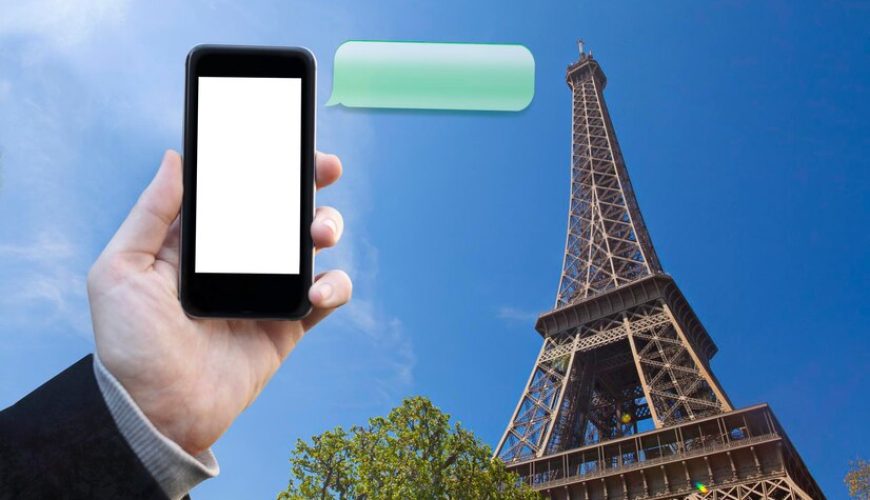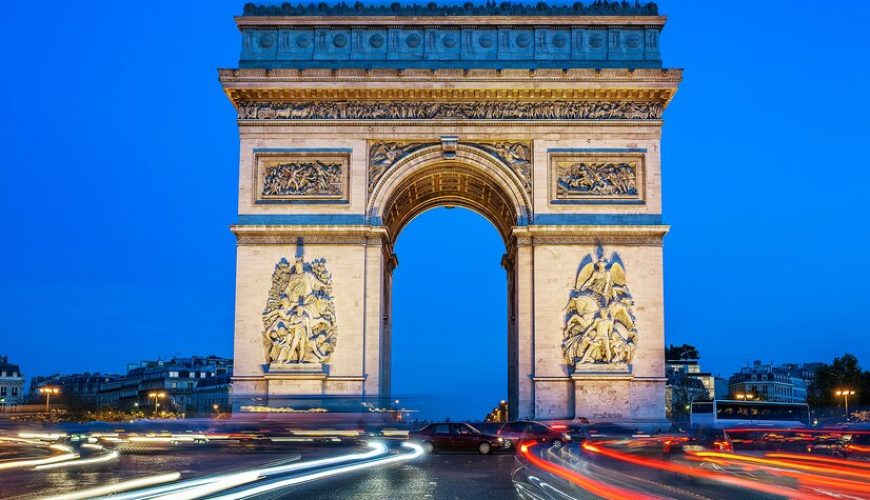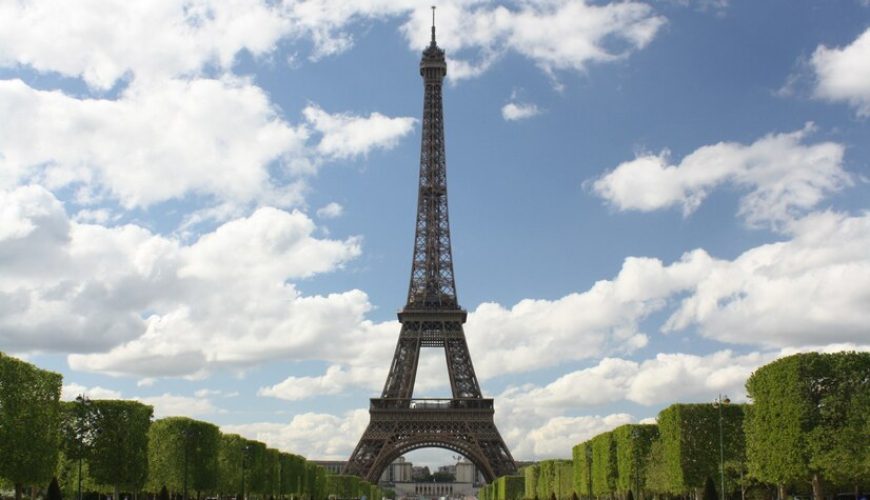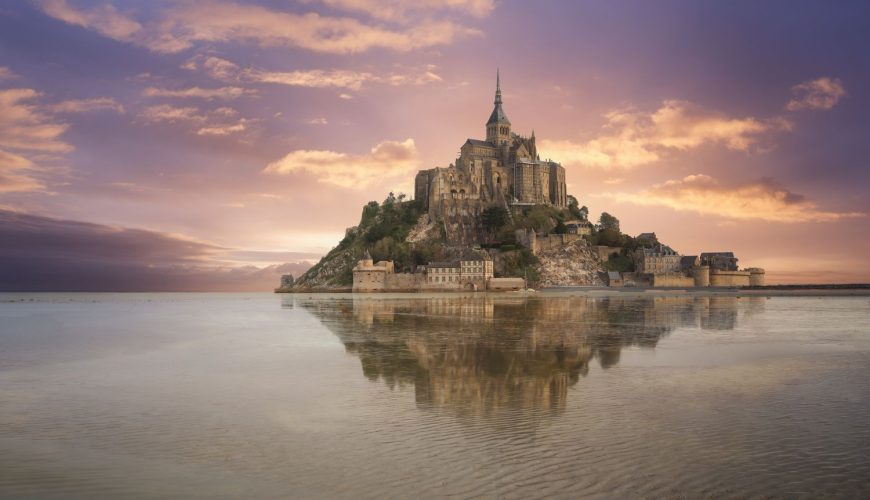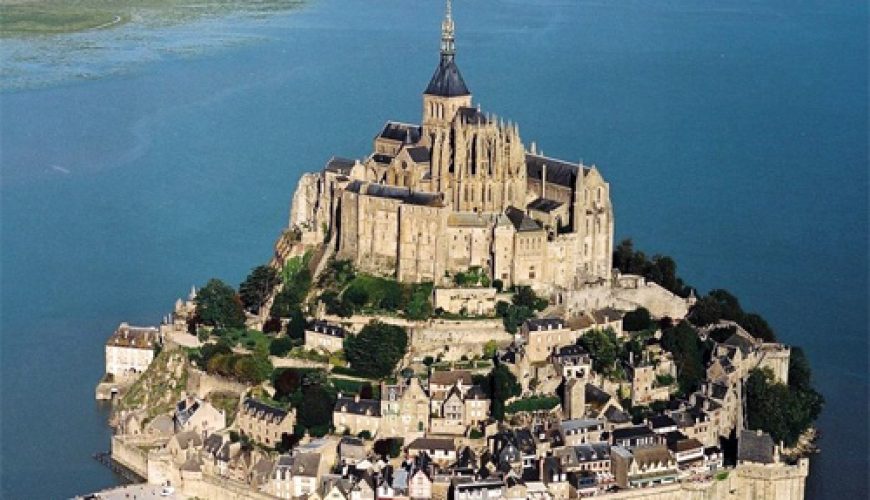Why Visit France?
France is a destination that captivates millions of travelers every year for countless reasons. From its rich history and world-renowned culture to its stunning landscapes and delectable cuisine, here are just a few of the compelling reasons why France should be at the top of your travel list. 1. Rich History and Heritage France is a country steeped in centuries of history, from the grandeur of Versailles to the medieval charm of Carcassonne. Its cities and villages are filled with historical landmarks, castles, and museums that tell the stories of kings, revolutions, and artistic revolutions. Whether exploring the Gothic splendor of Notre-Dame, visiting the battlefields of Normandy, or walking the ancient streets of Lyon, history is alive at every turn. 2. Iconic Landmarks France is home to some of the most recognizable landmarks in the world. The Eiffel Tower, Louvre Museum, and Palace of Versailles are just a few examples of architectural masterpieces that define the country. These sites not only offer stunning visuals but also fascinating stories about France’s cultural significance. 3. World-Class Art and Museums France has long been a center of art, with influential movements such as Impressionism originating here. Museums like the Louvre, Musée d’Orsay, and Centre Pompidou hold some of the most famous works of art in the world, from the Mona Lisa to Van Gogh’s Sunflowers. The country’s artistic legacy is celebrated in its galleries, street art, and architecture. 4. Exquisite Cuisine and Wine France is synonymous with food. Each region has its own distinct flavors, from buttery croissants and escargot in Paris to fresh seafood and bouillabaisse in Marseille. Don’t forget the cheese—France boasts over 400 types! Pair your meals with a glass of local wine from renowned regions like Bordeaux, Champagne, or Burgundy, where centuries-old winemaking traditions make each sip a journey through French history. 5. Scenic Beauty From the Alps to the French Riviera, France offers some of the most breathtaking landscapes in Europe. Hike through the lavender fields of Provence, explore the vineyards of Bordeaux, or relax on the sun-drenched beaches of Nice. The diversity of France’s natural beauty makes it a haven for outdoor enthusiasts and photographers alike. 6. Vibrant Culture and Festivals France is a cultural hub, known for its fashion, cinema, literature, and festivals. Whether it’s the Cannes Film Festival, Paris Fashion Week, or the vibrant celebrations of Bastille Day, there’s always something exciting happening. The French are passionate about their culture, making any visit a chance to immerse yourself in local traditions and events. 7. Romantic Atmosphere France, and particularly Paris, is often called the “City of Love.” Strolling along the Seine, enjoying a café au lait in a quaint Parisian café, or watching the sunset from the Eiffel Tower are just a few ways to experience the romantic allure of the country. For couples, France offers a perfect blend of intimate moments, scenic beauty, and cultural depth. 8. Fashion Capital of the World Paris is known as the fashion capital of the world, home to haute couture houses like Chanel, Louis Vuitton, and Dior. The city offers a chance to shop in iconic boutiques, attend runway shows, or simply admire the fashionable locals. Whether you’re window shopping along the Champs-Élysées or hunting for vintage finds in Le Marais, Paris is a must-visit for fashion lovers. 9. Diverse Regions and Local Experiences One of the most enchanting aspects of France is its regional diversity. Each area offers a unique culture, language, and way of life. In Brittany, explore the Celtic heritage; in Alsace, enjoy a fusion of French and German culture; in Corsica, discover the island’s rugged beauty and Italian influence. With so many distinct regions, there’s something for every traveler to discover. 10. Accessibility and Proximity to Other Destinations France’s location in Europe makes it an ideal base for exploring the continent. With a comprehensive train system like the TGV, you can easily visit neighboring countries like Belgium, Germany, Spain, or Italy. Within France itself, the train, bus, and domestic flight networks ensure that every corner of the country is within reach.
Must-See Sites in France
France is a treasure trove of history, art, and natural beauty. Here’s a guide to the top destinations every traveler should visit. 1. The Eiffel Tower (Paris) The symbol of France, the Eiffel Tower is an architectural marvel offering breathtaking views of Paris. Visit during the evening to witness its iconic sparkle, which happens every hour after sunset. 2. The Louvre Museum (Paris) The world’s largest art museum and home to masterpieces like the Mona Lisa and the Venus de Milo, the Louvre is a must-see for art and history lovers. 3. Mont Saint-Michel (Normandy) A stunning island abbey that seems to float during high tide, Mont Saint-Michel is both a UNESCO World Heritage Site and a masterpiece of medieval architecture. 4. The Palace of Versailles (Île-de-France) The opulent former residence of French royalty, the Palace of Versailles is known for its Hall of Mirrors, sprawling gardens, and rich history. 5. The French Riviera (Côte d’Azur) Famous for its glamorous beaches, azure waters, and charming towns like Nice, Cannes, and Saint-Tropez, the French Riviera is a favorite for sun-seekers. 6. Provence Lavender Fields From mid-June to August, the lavender fields of Provence burst into a sea of purple, creating one of the most picturesque landscapes in France. 7. The Loire Valley Châteaux This region is home to some of France’s most beautiful castles, including Château de Chambord, Château de Chenonceau, and Château de Villandry, surrounded by stunning gardens and vineyards. 8. The D-Day Beaches (Normandy) A visit to the D-Day landing beaches, such as Omaha Beach, and the American Cemetery is a poignant reminder of World War II history. 9. Carcassonne (Occitanie) A perfectly preserved medieval walled city, Carcassonne feels like stepping back in time with its cobbled streets, towers, and castle. 10. Bordeaux Wine Region Wine enthusiasts should explore the Bordeaux region, known for its world-class vineyards, charming villages, and the stunning Place de la Bourse in Bordeaux city. 11. Gorges du Verdon (Provence) Often called the “Grand Canyon of Europe,” the Gorges du Verdon offers turquoise waters and dramatic cliffs, perfect for kayaking, hiking, or just soaking in the scenery. 12. Lyon (Auvergne-Rhône-Alpes) Known as the gastronomic capital of France, Lyon is a UNESCO World Heritage Site with Renaissance architecture, Roman ruins, and world-class cuisine. 13. Strasbourg (Alsace) This picturesque city blends French and German influences with its half-timbered houses, canals, and the stunning Strasbourg Cathedral. 14. Chamonix-Mont-Blanc (Alps) A paradise for outdoor enthusiasts, Chamonix offers incredible skiing, hiking, and views of Mont Blanc, Western Europe’s highest peak. 15. Camargue (Provence) A unique natural reserve known for its wild white horses, pink flamingos, and salt flats, the Camargue is perfect for nature lovers. 16. Saint-Émilion (Bordeaux) A charming medieval town surrounded by vineyards, Saint-Émilion is a UNESCO World Heritage Site and a haven for wine lovers. 17. Rocamadour (Occitanie) Perched on a cliffside, the village of Rocamadour is a pilgrimage site famous for its sanctuaries and stunning views. 18. Alsace Wine Route Winding through storybook villages like Colmar and Riquewihr, this route offers exceptional wines, half-timbered houses, and flower-filled streets. 19. Corsica This Mediterranean island, known as the “Island of Beauty,” features rugged mountains, pristine beaches, and historic towns like Ajaccio, Napoleon’s birthplace. 20. Pont du Gard (Occitanie) A Roman aqueduct and engineering marvel, the Pont du Gard is a testament to the ingenuity of ancient Rome and a stunning historical site. From vibrant cities to serene countryside and breathtaking coastlines, France offers a little something for every traveler.
10 Essential Tips for Travelers Visiting France
By keeping these tips in mind, you’ll navigate France with ease, immerse yourself in its culture, and make the most of your journey. Bon voyage!
10 Fascinating Historical Facts About Paris
Paris is a city where every corner reveals layers of history, making it an endlessly fascinating destination for travelers.
The Eiffel Tower: A Temporary Structure That Became Timeless
The Eiffel Tower, one of the world’s most celebrated landmarks, was never intended to be a permanent fixture. Built for the 1889 Exposition Universelle (World’s Fair) in Paris, it was conceived as a showcase of modern engineering and design. Gustave Eiffel’s innovative iron structure was the tallest man-made creation of its time, standing at 300 meters (984 feet). However, it was originally planned to be dismantled after 20 years. The Eiffel Tower was constructed on land leased from the city of Paris with an agreement that it would be removed after the fair. Many Parisians, including prominent artists and writers, disliked the design, referring to it as an industrial blemish on the city’s skyline. Once the fair concluded, its functional purpose seemed limited, reinforcing the idea that it was a temporary exhibit. Its fate changed when it became clear that the tower could serve as a crucial platform for emerging technologies. By the early 20th century, it was being used for radio transmissions, including military communications during World War I. Its strategic value not only saved it from demolition but solidified its importance in French infrastructure. What was once dismissed as an eyesore grew to become a beloved symbol of Paris and innovation. Over the decades, the Eiffel Tower became synonymous with the city’s identity, drawing millions of visitors every year. Its architectural significance, combined with its role as a cultural icon, ensured its place as one of the most recognized structures in the world. Interesting Facts About the Eiffel Tower Visiting Tips The Eiffel Tower’s transformation from a temporary exhibit to an enduring symbol of Paris is a remarkable testament to how utility, innovation, and public sentiment can reshape history.
France: The Land of Castles
France is home to over 40,000 castles, ranging from grand royal palaces to small medieval fortresses. This makes it the country with the most castles in the world, earning it a reputation as a dream destination for history buffs, architecture enthusiasts, and romantic travelers alike. These castles, or châteaux, span centuries of history and are spread across the country, showcasing the evolution of French culture, art, and power. Notable Castles to Explore in France Why France Has So Many Castles France’s abundance of castles is tied to its feudal history and the country’s strategic location in Europe. During the Middle Ages, fortified castles were built to protect territories and assert power. Later, during the Renaissance, these fortresses evolved into luxurious residences for the nobility, reflecting their wealth and artistic ambitions. Tips for Travelers Exploring French Castles Whether you’re drawn to their architectural beauty, historical significance, or romantic allure, France’s castles are a testament to the country’s rich cultural heritage.
Exploring France’s UNESCO World Heritage Sites: A Traveler’s Guide to Europe’s Cultural Crown Jewel
France boasts an impressive number of UNESCO World Heritage Sites, making it a top destination for travelers interested in history, culture, and natural beauty. With 49 UNESCO sites as of 2023, France is the European country with the most designated sites. These sites highlight the country’s diverse heritage, ranging from medieval architecture and Roman ruins to stunning landscapes and urban centers of cultural significance. Key Sites to Explore: Tips for Travelers: Exploring these UNESCO World Heritage Sites offers a unique opportunity to connect with the rich tapestry of French history, art, and nature. Each site tells a story that reflects the country’s cultural depth and universal significance.

